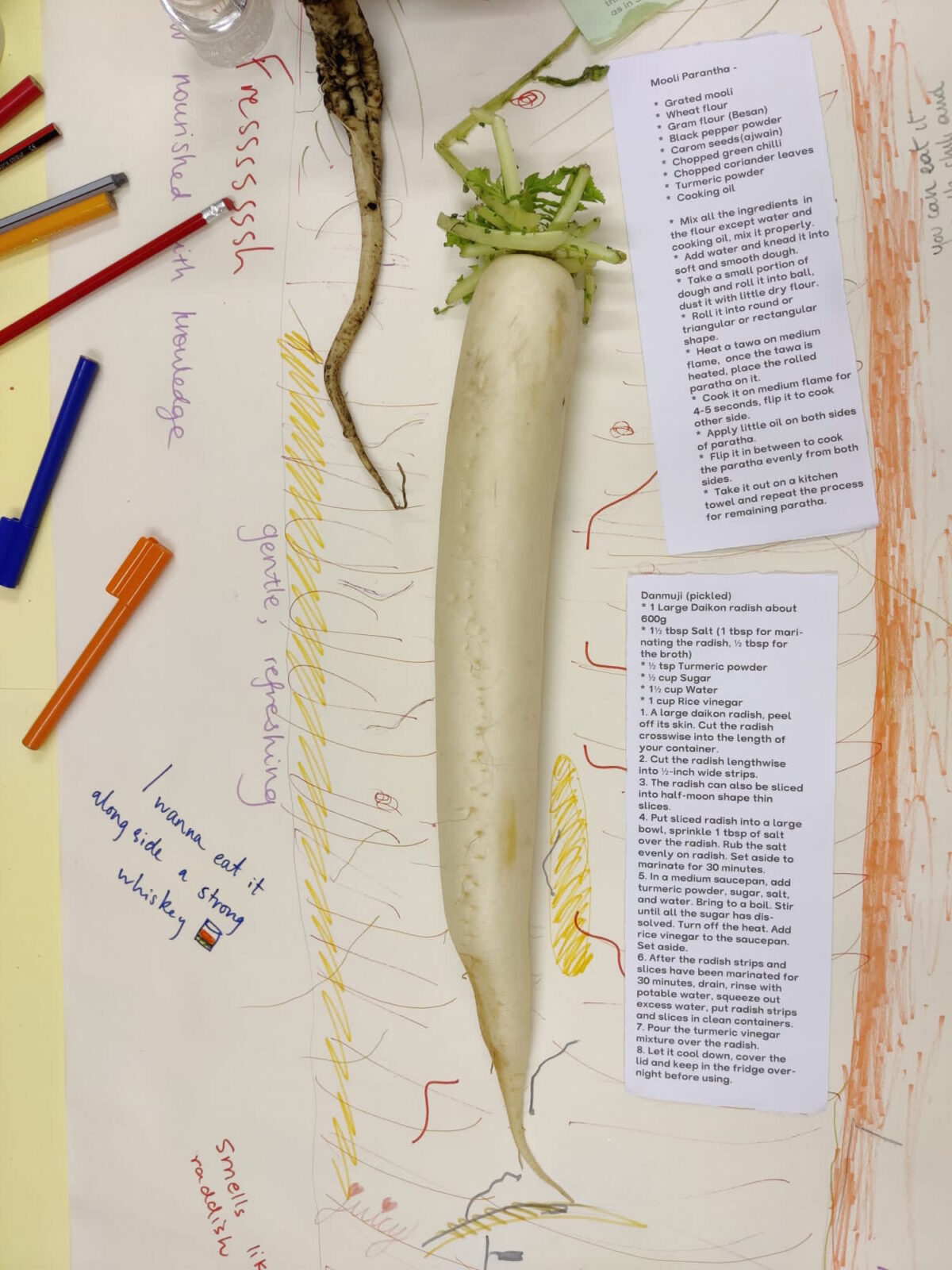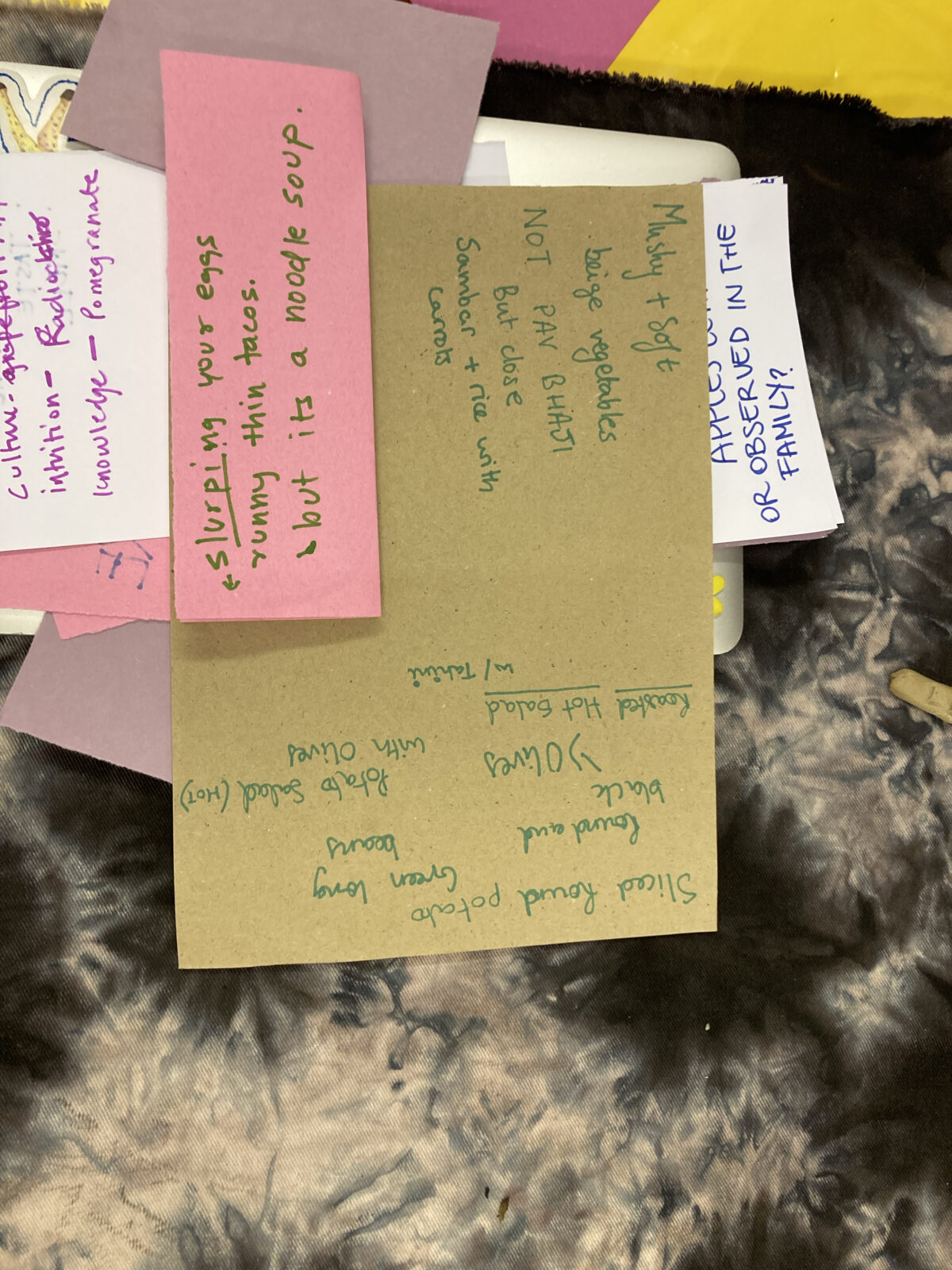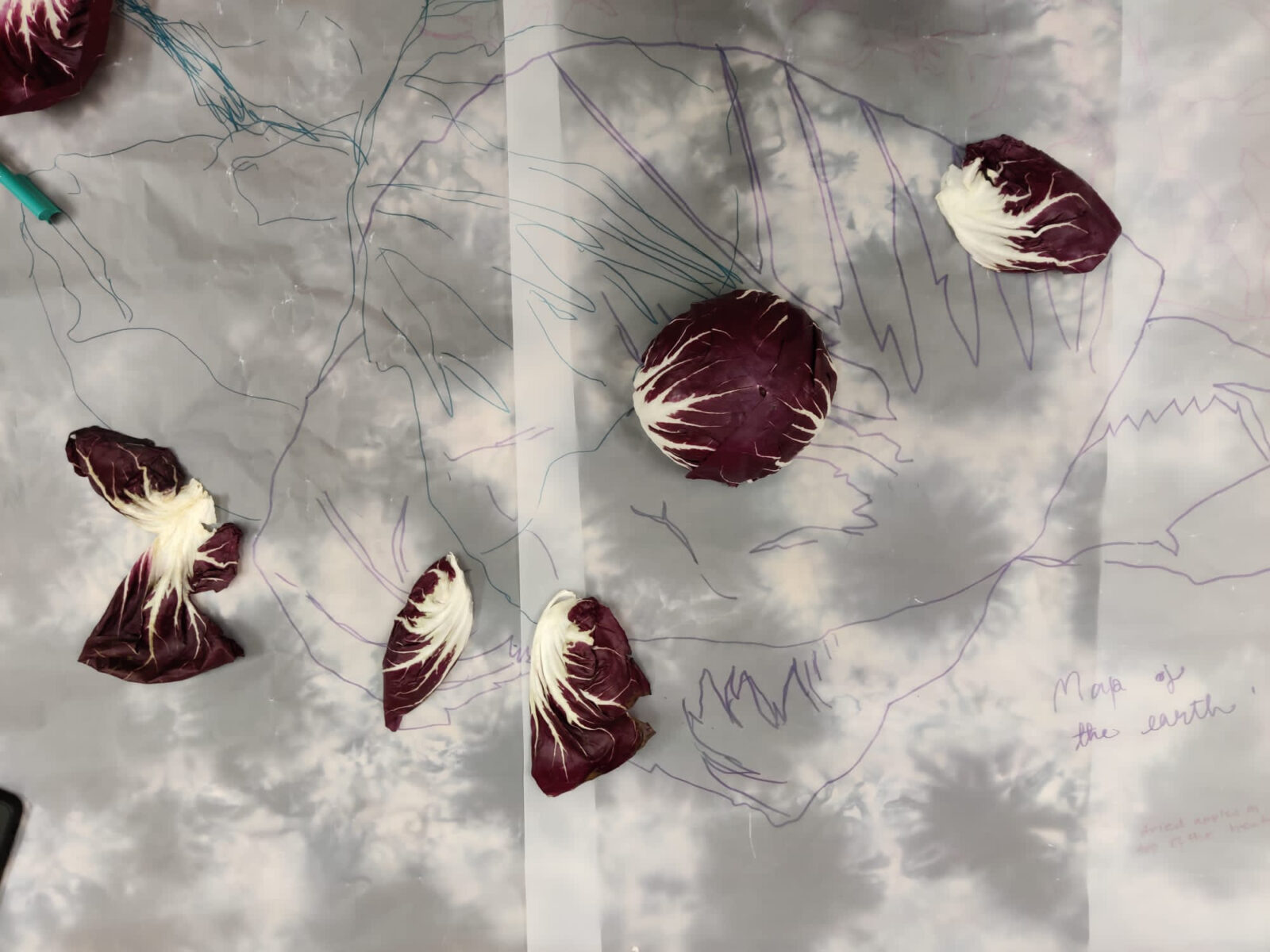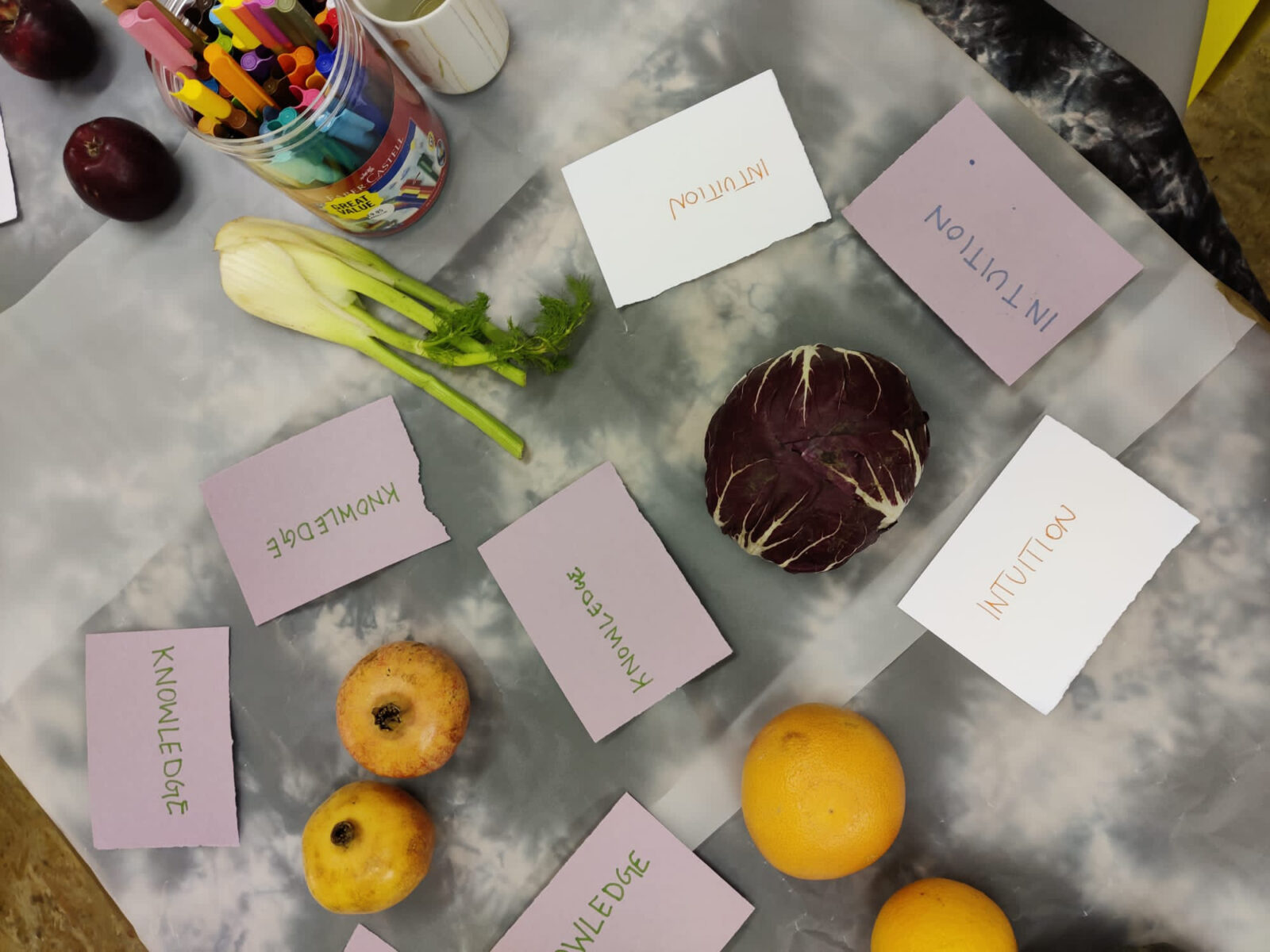By Ragini Chawla –
When I think of heritage as social action, I believe for me it speaks about intangible practices and knowledge that is passed down between families. With this in mind the three sessions for the project You drop, You sow, You gather, at Rumpus Room which were scheduled for winter were designed to share how our families and cultures prepare for the winter; more nuts, more soup, more duvets?Thinking about foods that bring us warmth, how we intuitively crave for certain vegetables in winter, and reflecting on our mothers/sisters/friends asking us to eat more greens, more clementines, more nuts as the temperatures drop.
The first session involved introducing these ideas along with harvesting the fenugreek leaves that we had planted in the yard during the previous session in Spring 2022. We sat across a table, talking about winter food, exchanging stories followed by heading out to the garden dodging the rain.

The second session began with collectively drawing a giant mooli on a white sheet of paper. The session involved imagining different recipes of mooli, how mooli is grown, and preparing a meal – mooli cooked with kale, turmeric, red chilli powder, generous amounts of amchoor, cardamom added in. After a wee discussion on whether it is still okay to add in cardamom in the middle of the cooking process and not have it splatter in the oil in the beginning.
For the third session we talked in depth about topics of intuition, knowledge and culture and took these as points of emphasis to talk and think about South Asian heritage as social action. We started with a warm up game; each participant had to describe their recent meal without mentioning the food itself. We all intently described the taste, smell and texture. Turned out the exercise was much harder than imagined at the time of conception. It did lead to some fascinating ideas like slurping eggs, or thinking about runny thin tacos when descriptions were give for a runny noodle soup.

Although tougher than expected, I think its a good way to intently think about what ones eating, maybe I just need to find a better way to facilitate an exchange of this kind. It was fun nonetheless. We moved on to a communal drawing exercise. Radicchio is placed on top of a transparent sheet of paper. We stand around it, some of us are seeing the vegetable for the first time and take some light guesses at what it could taste like.
To get to know the vegetable better we begin by drawing around it a picture of the vegetable, together. Squiggly lines, multiple colours, going over each others lines, concoction a form for our communal radicchio. We all stop almost at the same time, look satisfied, tilt our heads slightly squint, and decide it looks good.

Camilla is excited to introduce an activity to follow which we called “speed dating with the vegetable.” Insights collected from the previous sessions having given inspiration for this exercise. Pomegranate, radicchio, apple, are placed on a table. Alongside each fruit are a set of 4-5 small sheets of paper.
Each set of paper has question relating to three topics:
Intuition – radicchio
Knowledge – pomegranate
Culture – apple

The questions in each set talk take the vegetable as a medium to talk about the three topics. For example, for intuition the questions framed were as such:
-How would I cook it?
-Where is my intuition coming from?
-Can intuition be thought of as knowledge that is generated from lived and cultural experiences?
Insights from the activity, some of which make more sense, some of which don’t care to, and are musings –
-‘Chicory, a sea vegetable also magic crystal ball’
-‘Self-learnt knowledge from family doesn’t care to be true or false’
-‘Dried apples on top of the heater’
Following a discussion about how we find intuition and familial knowledge a very important part of our growing up in South Asian families, we sit around a table and eat the radicchio, and finally know what it tastes like.
Crunchy, bit sour, juicy.
Camilla made a delicious salad with clementines and fennel in, which really helped to counter the sourness, bring in fresh sweetness. We enjoyed this with a hearty leek and potato soup also prepared by Camilla. Over the meal we discuss more about our families, our shared love for Arooj Aftab, and how good the radicchio salad and soup taste!